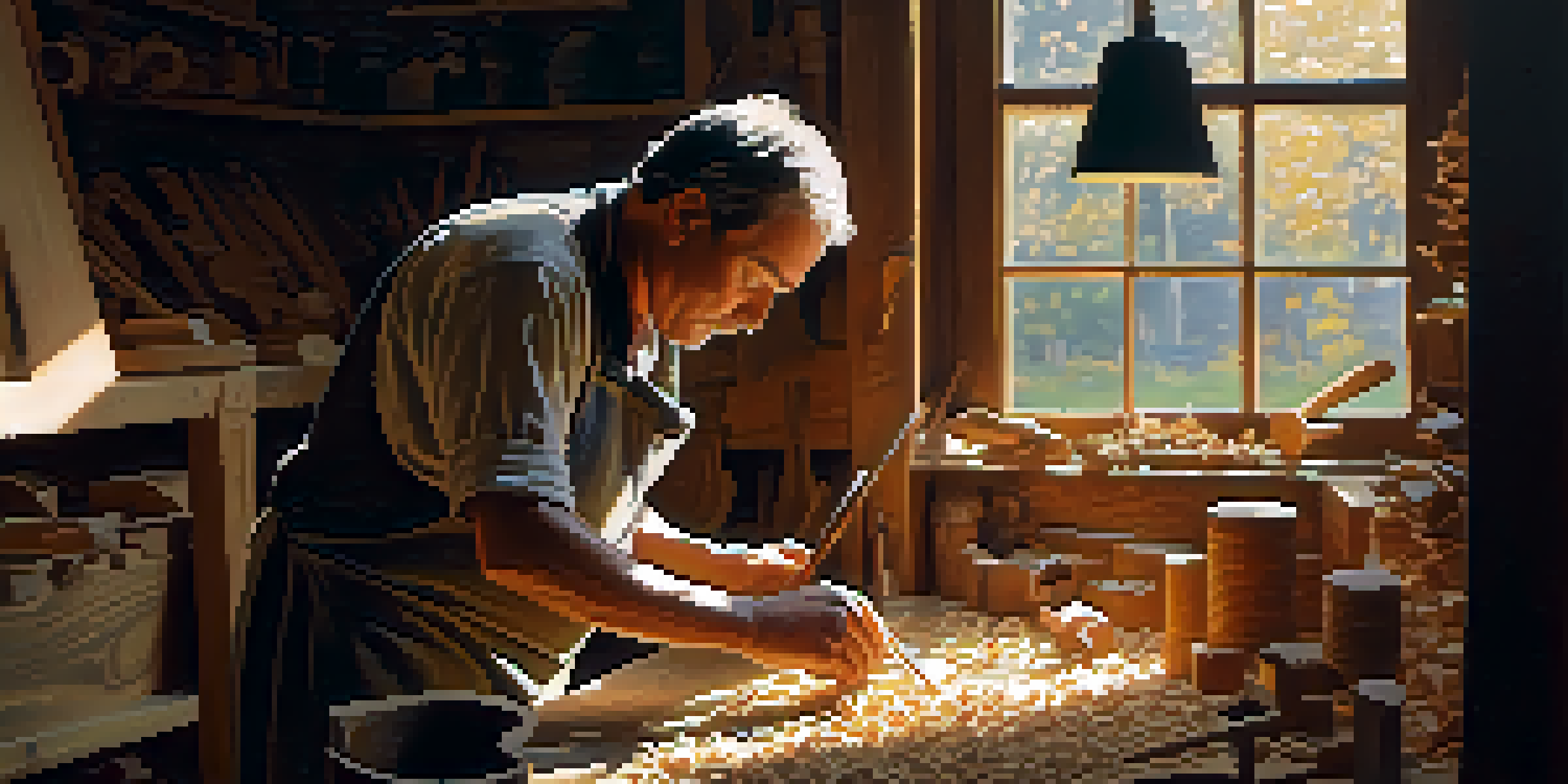Carving Techniques: Merging Craft with Digital Precision

Understanding Traditional Carving Techniques
Traditional carving techniques have been passed down through generations, encompassing methods that utilize hand tools to create intricate designs. Think of a skilled artisan chiseling away at a block of wood, each stroke reflecting years of practice and an eye for detail. These techniques often include relief carving, in which the design is raised above the background, and in-the-round carving, which allows for a three-dimensional effect. The beauty of these methods lies in their tactile nature, providing a direct connection between the artist and their medium.
The Rise of Digital Carving Technologies
In recent years, digital carving technologies have gained traction, transforming how artisans approach their craft. Imagine using a computer-assisted design (CAD) program to create a detailed 3D model that can be precisely cut by a CNC (computer numerical control) machine. This integration of technology not only speeds up the carving process but also enhances accuracy, allowing for complex designs that might be difficult to achieve manually. As a result, digital tools have opened up a world of possibilities for both new and experienced craftsmen.
Traditional vs. Digital Techniques
The blending of traditional carving methods with digital technologies enhances both artistry and precision in craftsmanship.
Merging Techniques: A New Era of Craftsmanship
The fusion of traditional and digital carving techniques represents a new era in craftsmanship, where artisans can leverage the best of both worlds. For instance, an artist might begin with hand-carved elements, then use a CNC machine to replicate those designs on a larger scale or in different materials. This approach not only preserves the artistry of traditional carving but also streamlines production, making it easier to bring designs to life. The result is a harmonious blend that respects heritage while embracing innovation.
Benefits of Combining Craft and Digital Precision
Combining hand-carving skills with digital precision offers several advantages for artisans and customers alike. Firstly, it allows for greater consistency in the final product, as digital tools can replicate designs with pinpoint accuracy. Secondly, this combination can significantly reduce the time required to complete projects, allowing artisans to take on more commissions or explore new creative avenues. Ultimately, this seamless integration fosters a more sustainable approach to craftsmanship, ensuring that both techniques can thrive together.
Benefits of Merging Approaches
Combining hand-carving skills with digital tools leads to greater consistency, reduced project time, and a sustainable crafting process.
Challenges of Integrating Traditional and Digital Techniques
While the benefits are clear, the integration of traditional and digital carving techniques is not without its challenges. For instance, some artisans may feel apprehensive about relying on technology, fearing it might diminish the artistry of their work. Additionally, the learning curve associated with digital tools can be steep, requiring time and effort to master new software and machinery. However, overcoming these hurdles can lead to greater innovation and personal growth within the craft.
Real-World Examples of Successful Integration
Numerous artists around the globe are successfully merging traditional and digital carving techniques, showcasing the possibilities this blend offers. For example, some sculptors use 3D printing to create prototypes of their designs before moving on to the final piece, ensuring that their vision is accurately captured. Others have developed techniques that involve laser engraving, which can add intricate details to hand-carved work. These examples illustrate how embracing technology can enhance creativity and push the boundaries of what is possible in carving.
Future Trends in Carving
Emerging technologies, like augmented reality and eco-friendly materials, are set to revolutionize the future of carving.
The Future of Carving: Trends to Watch
As technology continues to evolve, the future of carving is likely to see even more innovative trends that further merge craft with digital precision. One exciting trend is the growing use of augmented reality (AR) in the design process, allowing artists to visualize their creations in a real-world context before they are carved. Furthermore, advancements in materials, such as bio-based plastics and eco-friendly woods, may inspire new approaches to carving while promoting sustainability. The possibilities are endless, making this an exhilarating time for both traditional and digital artisans.
Conclusion: Embracing Change in Carving Practices
In conclusion, the merging of traditional carving techniques with digital precision is reshaping the craft and opening up new avenues for creativity. By appreciating the strengths of both approaches, artisans can enhance their work while preserving the essence of craftsmanship. As we look to the future, embracing change and innovation will be key to ensuring that carving continues to evolve and inspire. Ultimately, this blend of old and new not only honors the past but also paves the way for an exciting future in the world of carving.